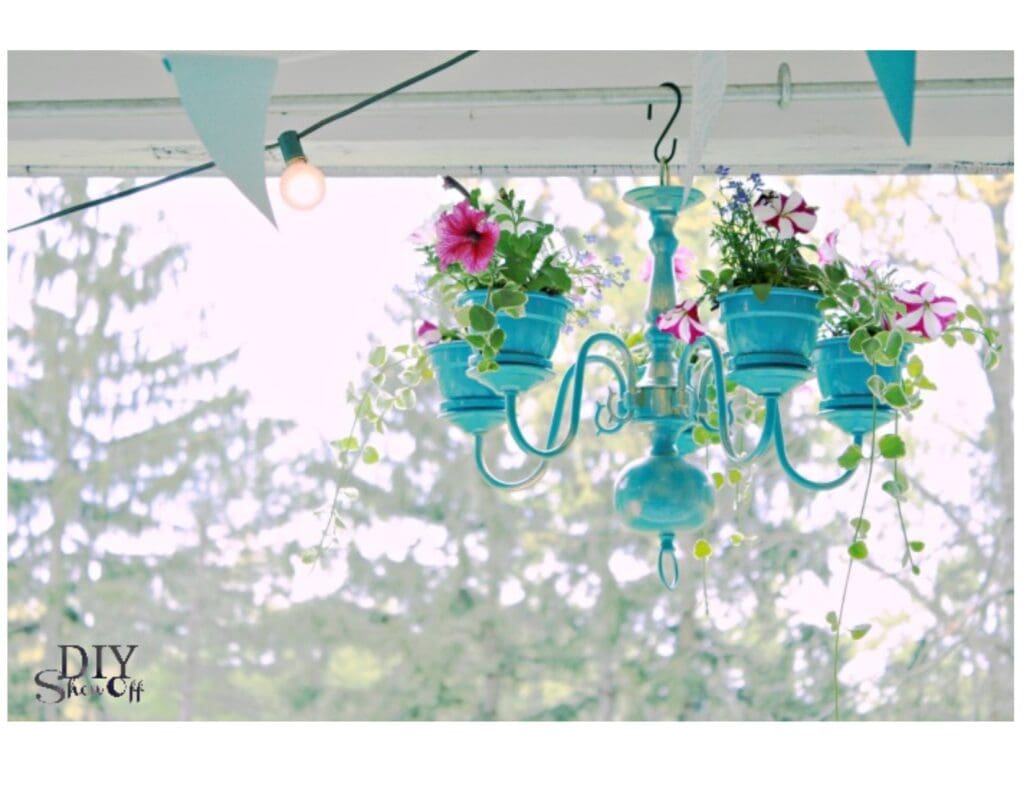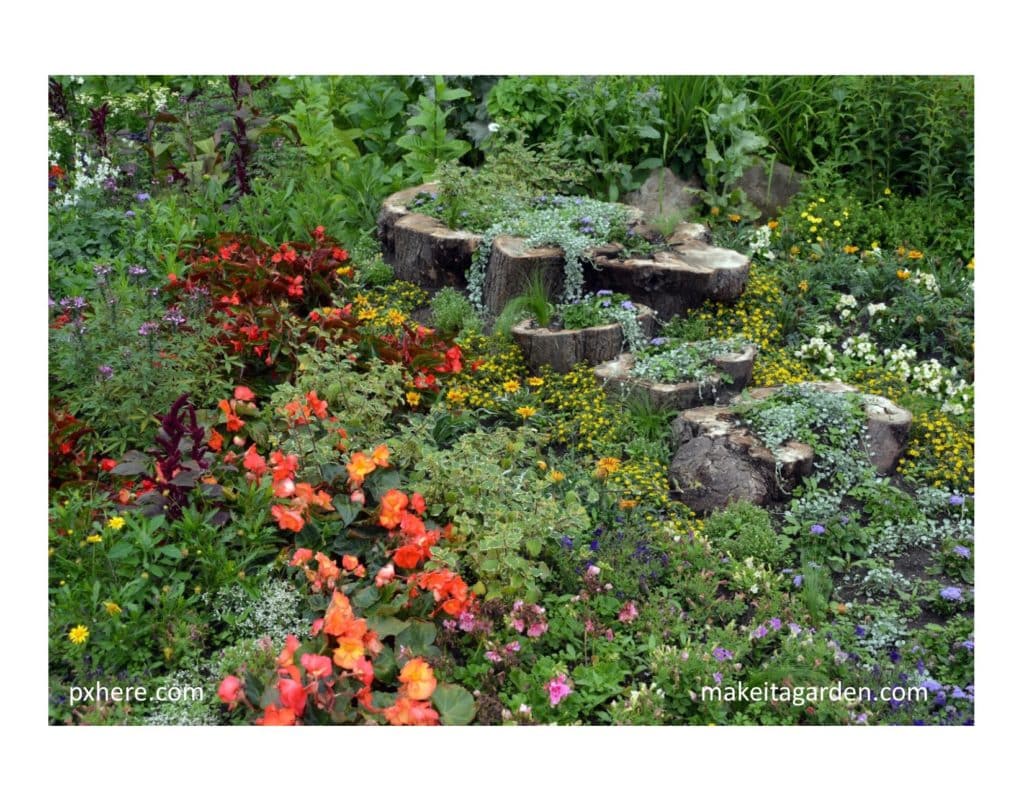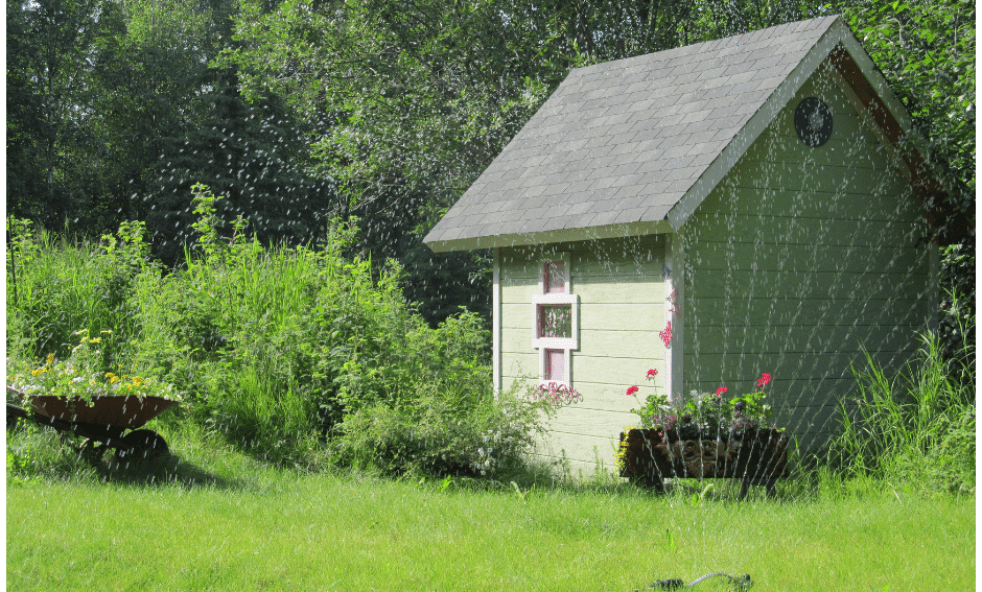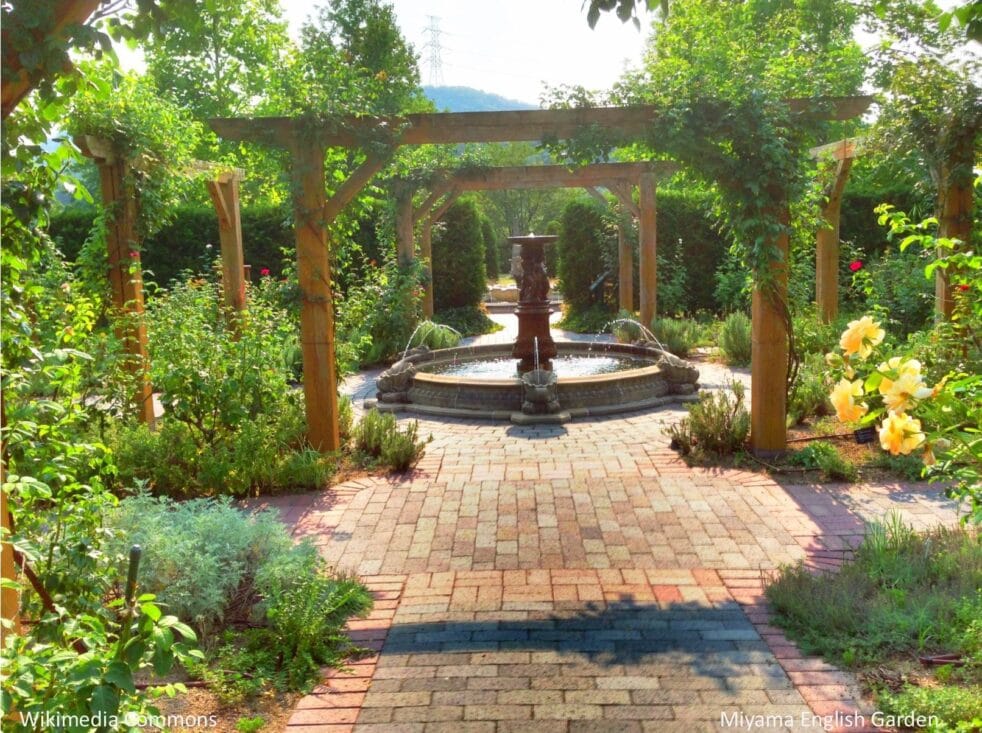
Garden Design Trends of 2020
“If you look the right way, you can see that the whole world is a garden”
-Frances Hodgson Burnett, author of “The Secret garden”
This Spring (2020) a new movie version of “The Secret Garden” will be in theaters across the country. It’s based on the classic 1911 children’s novel by Frances Hodgson Burnett. While the story has very little to do with actual gardening, what it does do is ignite our imagination. That’s significant!
It whets the appetite for creative places in our own backyards, even if not “enchanted”. That’s why I think we’re almost guaranteed to see a renewed interest in gardening and garden design.
In fact, if the garden industry is on their toes, it ought to be well prepared for those clamoring for secret gardens of their own. Don’t get me wrong, there’s still a place for formal, manicured lawns. But the tide is shifting. Instead, more fanciful and imaginative backyard escapes are showing up in garden design trends of 2020 and beyond.
Garden design trends of 2020
The Big Picture
What’s more interesting, I think, is what these trends convey. According to Houzz, people are coming to view their outdoor areas as an extension of their living space. Which, by the way, is a great idea for making smaller homes live larger.
When it comes to entertaining, there’s a desire for full-sized outdoor kitchens, fire pits and pergolas. That translates to more comfortable, better designed outdoor furniture. Porch swings have a new elegance. Now, there’s full-sized swing beds on the market. The backyard can totally be a pleasant, restful place to hang out.
As for the backyard, HGTV points to the trend of working tidy vegetable gardens and fruit trees into the landscape. Attractive water features are available across all budgets.

For the kid at heart, some home owners are having fun building “she sheds” and adult tree houses in the backyard. (see my article on Hideaway Havens for Adults) The trend is gaining such momentum that even big box hardware stores like Lowes offer up a version of what they call a “she shed”/Lowes.
Interest in gardens
What gets me really excited, though, is that people are interested in gardens again–not just for growing veggies–but as a destination. A welcoming and inspiring place to spend time. And they want to create that environment right in their own back yards!
So much so, that new terminology is emerging to describe this behavior. “Staycation” (conjunction of “stay” and “vacation”) and “holistay” (“holiday” and “stay”) are modern terms that refer to families and individuals who are scaling back with travel. Many simply enjoy leisure activities within driving distance that doesn’t require overnight accommodation. While others are investing in more extravagant backyards and patios for taking it easy. They want to create the “feel” of a traditional vacation while remaining at home. (Source: Wikipedia)

What defines a “trend?”
I hope you’ll recognize some of the garden design trends of 2020 on this list. They’ve been on the horizon, but are now being more fully embraced. It takes awhile–years even– for homeowners to be introduced to new concepts and ideas. Something they see in a magazine or at a Home and Garden show. Or even on-line sites like Pinterest.
Also, you may or may not be surprised to learn that many of the garden design trends we’re seeing in the United States started over in England! (or “across the pond” as the saying goes). They are definitely trend-setters. For that reason, one of my sources for information is the RHS Chelsea Flower Show.
Generally, though, when it comes to garden design trends, I consider three criteria:
1) Something that’s been gradually developing over a period of time.
2) There’s a favorable response. There’s something captivating about it that appeals to folks, not just artistically, but on an emotional level. And, so people begin to get a vision for the what they’d like to do in the near future. It’s the beginning of a planning process.
3) And thirdly, gaining momentum. That’s when homeowners actually begin incorporating the ‘look’ into their own backyards to one degree or another.
It trickles down to the hardware stores. They want to meet the demand when DIYers come in looking for specific products. Then there’s outdoor furniture manufacturers, producers of garden art, and local landscapers anticipating requests from their customers.
Niche garden design trends of 2020

Some smaller “niche” trends hang around the peripherals of the larger trends. They may not be “new” but are going strong in 2020. Take re-purposing and re-cycling for example. It’s huge!
The Internet site Pinterest is full of clever ways to turn milk jugs into planters and tea cups into bird feeders. And you better believe that Flea Markets, Re-Build stores and your local Picker are very aware of these trends to market their goods. These days, funky mirrors, vintage metal bed frames, and old doors and windows may very well end up in the garden!
With that in mind, here are my insights into the most prominent and fanciful trends I see moving forward into 2020 and beyond.
Garden Design Trends for 2020
Natural Landscaping
Natural Landscaping introduces elements of nature into the landscape to create a more natural setting. It’s quite a rugged and rustic “look” akin to bringing a National Park into your backyard. It’s boulders, ferns, dry stream beds.
Some people even incorporating logs or mossy tree stumps into the mix. See my FULL article on Natural Landscaping Here.
The informal planting of flowers and shrubs is an attempt to mimic the random spontaneity of the environment. Natural landscaping favors meadows over manicured grass lawns. It’s not just for looks, either. The idea here is that clover and other wildflowers attract honey bees and other pollinating insects. They, in turn, attract birds.
The National Wildlife Federation offers a program to homeowners that lets them become a certified wildlife habitat. It’s pretty easy.

What can we learn from natural landscaping?
In my research, it would seem as though any “back to nature” trend is directly related to the state of our society. More technology, more commuting, more building, more noise intruding into daily life. Not everyone can take a drive in the country to soak in the beauty of the natural environment. So the answer is to bring the country to the outdoor spaces around our home.
Natural landscaping, when well implemented, is absolutely stunning. It’s not hard to see why it is gaining in popularity.
Xeriscapes
Xeriscape is a term that refers to landscaping with water conservation in mind. Most plants, trees and flowers we have in our yards require a lot of water. Watering is also hard work. Fortunately, you don’t have to live in the desert to enjoy unique, drought-tolerant species that require less water.
Some areas of the U.S. are Water Conservation Districts. That makes gardening with some of the more popular varieties–including lawns– a bit more challenging. As a result, various agencies are helping homeowners and landscape professionals find unique, interesting and colorful vegetation that looks great together, but also doesn’t need as much water.
Xeriscaping also encourages the use of plants that are native to a region. They thrive in their natural habitat without requiring a lot of specialized care. Perfect for anyone who doesn’t like to fuss with a yard or garden.
The use of local plants helps to propagate and preserve these native species. Particularly those that have developed certain qualities that are distinct to its region.
New Perennial Movement

This is another exquisite “natural design” movement merging ecology, architecture and natural landscaping. Most sources credit Dutch plantsman and designer Piet Oudolf with starting the movement. Or perhaps re-starting it depending on who you talk to.
It’s labeled “the new perennial movement” for promoting more naturalized, meadow-inspired landscapes in both residential and industrial settings.
Here’s a short, 6 min feature from just last year that captures the heart of what it’s all about.
Some have argued that the New Perennial movement has already reached its peak. But I feel it has a strong place among garden design trends of 2020 due to it being ‘environmental’ in essence. Environmentalism is a huge influence on practically everything going into 2020 and beyond. From composting to ground covers. And from re-purposed garden art to more naturalized landscaping.
What can we learn from this design trend?
As previously stated, a trend is something that’s being heartily embraced. But why is that? There’s a reason “back to nature” is impacting the garden industry as a whole. I’m no sociologist or psychologist. But I don’t think you have to be. To understand the human need to connect with nature is pretty self-evident.
When incredibly talented designers like Piet Oudolf create landscape masterpieces in the heart of a city, we drink it up not realizing how ‘dehydrated’ we really were. It touches something on the inside of us that we didn’t even know was there. Surrounding oneself in the beauty of nature is really refreshment, if only for one hour on a lunch break.
Though it’s been around for decades, the extraordinary Falls Park in the city of Greenville, SC is another example. It’s renovations in the 1990’s and in 2004 have made it even more spectacular.

Not everyone can just jump into their car and travel to the countryside. But we can bring a touch of the countryside into our towns and subdivisions.
Urban Gardens
There’s good news for the city dweller. More trees and shrubs with vertical growth habits (called “fastigiate”) are available as never before. These are varieties with branches that curve upwards instead of sprawling out wide.
Therefore, they are perfect species for the small yards of townhomes and apartments. It helps city dwellers embrace gardens and create enjoyable little outdoor spaces when they can include trees and shrubs that don’t take up so much room. It also helps by bringing more greenery into urban neighborhoods.
It’s one of the advancing garden design trends for 2020.
Lower maintenance lawns

The push for lower maintenance lawns has been around quite a long time. Yet it shows up annually on everyone’s list as a “trend”. It’s not without merit. The idea is to replace at least some portions of traditional grass lawns with wildflowers or meadow-like plants. Recently, ground covers favor clover in the mix. The clover flower attracts bees and other pollinators that are important to the eco-system.
The trade off promises many benefits. One of which is less work. Less time mowing, weeding and fertilizing. (or paying a lawn service to do it). It’s xeriscape, too, because less water is required for grass-less turf.
Additionally, it’s easier on your wallet, too. Less mower maintenance, less oil and gas. Not having to buy expensive chemical fertilizers and pesticides which are harmful to the “good” insects as well.
The problem is that suburban neighborhoods and especially those with HOAs consider ‘meadows’ weedy and “un-tidy”. We’ve had traditional lawns for so long that it’s hard for advocates to get folks on the bandwagon. There’s nothing wrong with a lush, green lawn. Or a not-so-lush or green lawn, for that matter.
New Automation Technology:
Technology has found its way into the lawn and garden industry. Watering systems are improving. And now you can have a little machine mow your lawn that you can program right on your Smart phone. Still, people love their riding mowers and enjoy getting out on them.
More garden design trends of 2020
The influence of arts and crafts
Crazy paving is a term for very artsy pathways with “mosaic-style” patterns using with mis-matched materials. Any combination of bricks, pavers (even broken ones) stones, gravel, lumber, in irregular patterns, shapes, sizes and color.

Reclaimed Anything: Beautiful and unique fences and privacy screens are being made from pallet wood, barn wood, corrugated sheet metal panels, metal pipe, you name it.
DON’T FORGET YOUR FREEBIE! Be part of the Make it a Garden Community by signing up for our monthly newsletter, below. As a thank-you gift, you’ll also receive my 10 Best Garden design tips, FREE. We never send “weeds” (or spam), just relevant, enjoyable garden & art related topics.
popular niche garden styles
While some of these garden decor niches have been around, they are still quite popular and are continuing with good momentum into 2020. I’ve included them here:
- Fairy Gardens (yes, even for adults!)
- Flea Market gardens
- Rustic country or woodland gardens
- Vintage/Shabby Chic
So what’s the behind the staying power of these niche garden styles? What’s the attraction? Here’s my theory. I believe it’s two key things:
1) For those on a smaller budget, these can be very affordable garden ‘themes’. It’s a fun, rewarding activity to shop for garden treasures at the thrift store. I like to use them in my own garden decor scheme. It’s physically doable DIY projects that get people outside bonding with their garden. And that makes people feel happy.
2) The nostalgia factor. Vintage brings to mind simpler times. It has a soothing effect. There may be fond memories attached. While some critics have grown a little weary of styles like Shabby Chic, it’s undeniable charm is just magical in the garden.
Some final thoughts:
So what do all these garden design trends have in common? Like I said at the very beginning, the common denominator is that they all revolve around a desire to invest a bit more in our yards and gardens. People enjoy getting outside more if there’s something interesting to see and do.
This writer likes anything that encourages people to experiment with design and use their imaginations on any level. Whether they draw inspiration from the environment, the mystical, or a past era to inspire them. Everyone needs what a garden has to offer. It’s something to celebrate!
“And the secret garden bloomed and bloomed and every morning revealed new miracles.”
― Frances Hodgson Burnett, The Secret Garden
More posts about garden designs
How to Define the Look you Love for Your Garden
Design Trends That Work on a Small Budget
How to Create the Perfect Rustic Garden


Bravo, Kris! Lots of great information and ideas. I like the term; She Shed. What a wonderful response to the Man Cave. I enjoyed the video of the garden designer and I saved a link to the Lowes She Shed for future reference. Thank you so much for blogging!
Thanks! Glad you liked it. The term “she shed” isn’t mine…not at all…it’s just kind of an industry term, I guess. But YES, it’s the alternative to the man cave. The landscape designer I believe you’re referring to is Piet Oudolf and yes, his ability to weave a naturalistic environment into just about any setting is amazing!
I love your photos!
Thank you, Molly. I try hard to bring quality photography to the blog. I appreciate your feedback. -Kristen